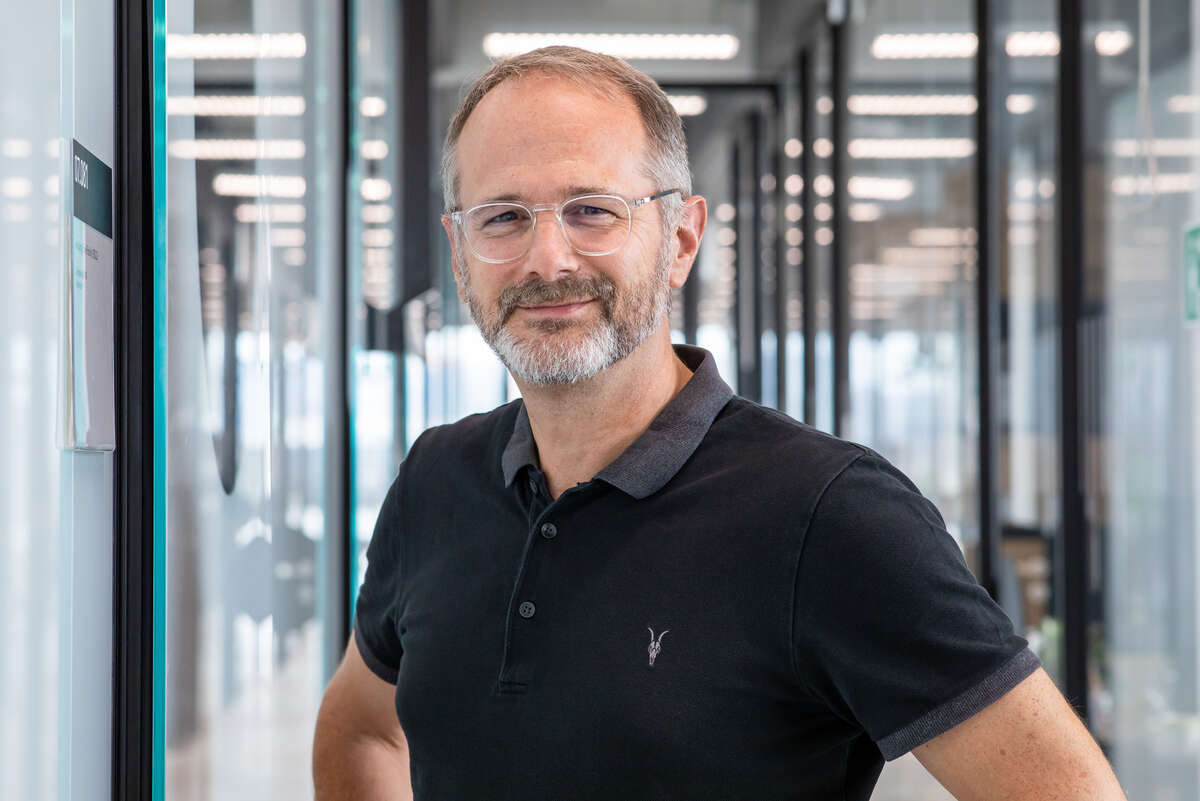Oliver Biehlmaier, Head of Imaging Core Facility
For 14 years, the Biozentrum has had its Imaging Core Facility (IMCF) – and for 14 years, it has been led by Oliver Biehlmaier. The IMCF was among the first technology platforms established to give researchers access to cutting-edge microscopy and imaging expertise. We spoke with Oliver about how it all began and how the facility has evolved.

How did you get started back then?
When I joined in 2011, there were no microscopes yet, and not even a space for them. The facility had to be built from scratch – from the rooms to the first instruments. During the first months, I spent most of my time talking with researchers to understand what they really needed. That laid the foundation for everything that followed.
How has the IMCF developed since then?
In the beginning, we were just three people. Today, we are a team of eight, supporting researchers across a wide range of disciplines. The field of microscopy has advanced rapidly, and we’ve grown along with it – constantly integrating new technologies and methods.
How does your service work?
Researchers come to us with their project ideas, and we advise them on which technology is most suitable. We help them set up their experiments, use the microscopes effectively, and, if needed, assist with image analysis. Our goal is to ensure that everyone gets the best possible data for their research.
What else is part of your work?
Besides user support, we take care of maintenance, quality control, and data management. Keeping all instruments up to date and fully operational is essential for reliable, high-quality research results.
How widely is the facility used?
Utilization is excellent. Almost every research group at the Biozentrum uses our infrastructure regularly.
The IMCF was recently evaluated. How did that go?
Very well. The evaluation confirmed that we are a high-end microscopy facility covering many research areas. It also recognized our efforts to stay at the forefront of new developments and to be among the first to test new systems.
What are your biggest challenges right now?
Space is one – new microscopes require room and constant maintenance. We need to carefully decide which instruments make the most sense in the long term. Another challenge is data: our instruments generate enormous amounts of it, so we have to manage and sometimes delete what’s no longer needed.
You mentioned visibility as another topic. What does that mean?
Our infrastructure provides major value to the Biozentrum’s research. To make this contribution visible, we ask everyone who uses the IMCF to acknowledge us in their publications, or even list us as co-authors when our contribution is significant.
You’ve led the facility since it was founded. What keeps you motivated?
I truly enjoy what I do and have a fantastic team. Even though I commute from Zurich – and sometimes wish I were at the lake with my family instead of on the train – I still find the work deeply fulfilling. After so many years, I’m as motivated as ever.


